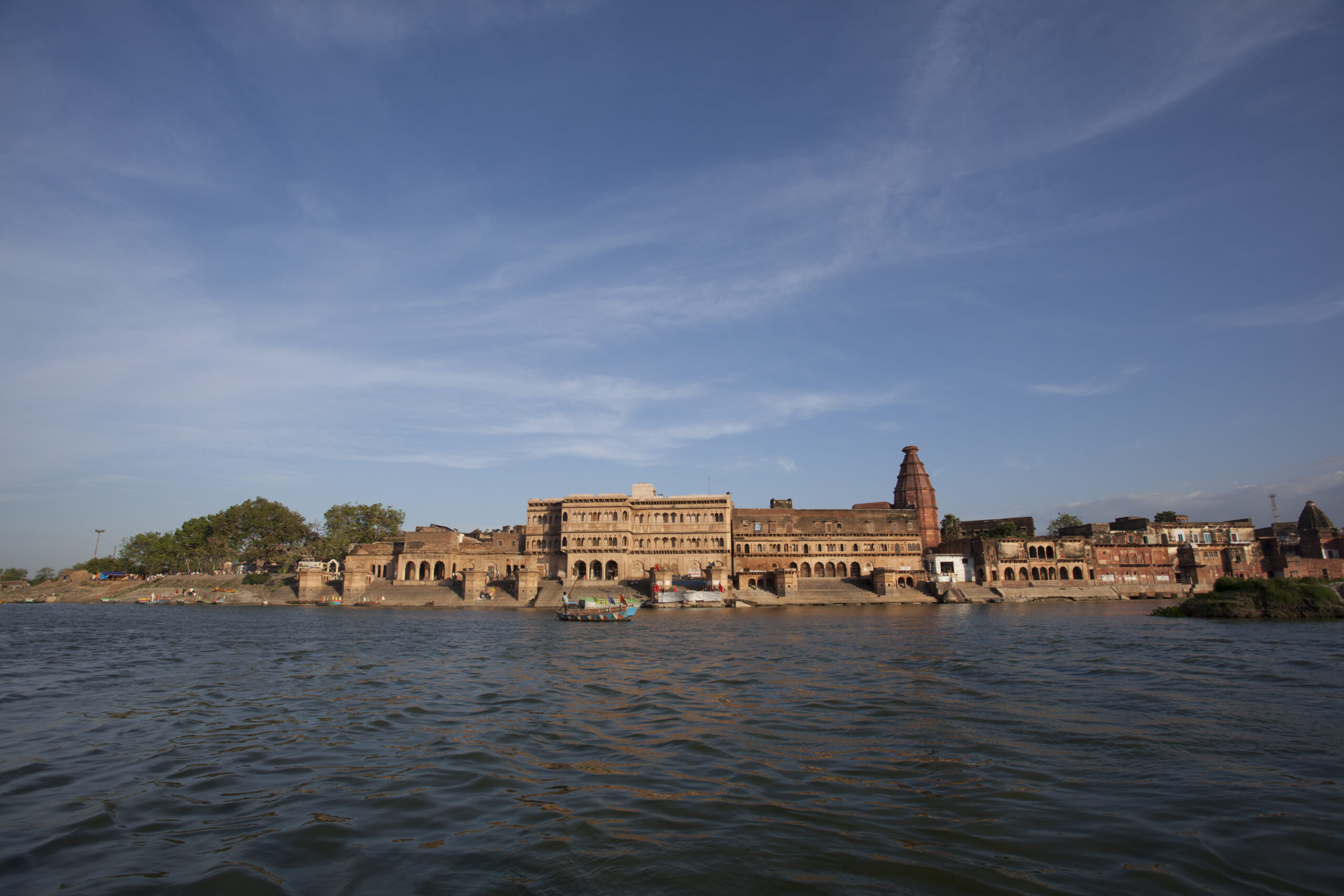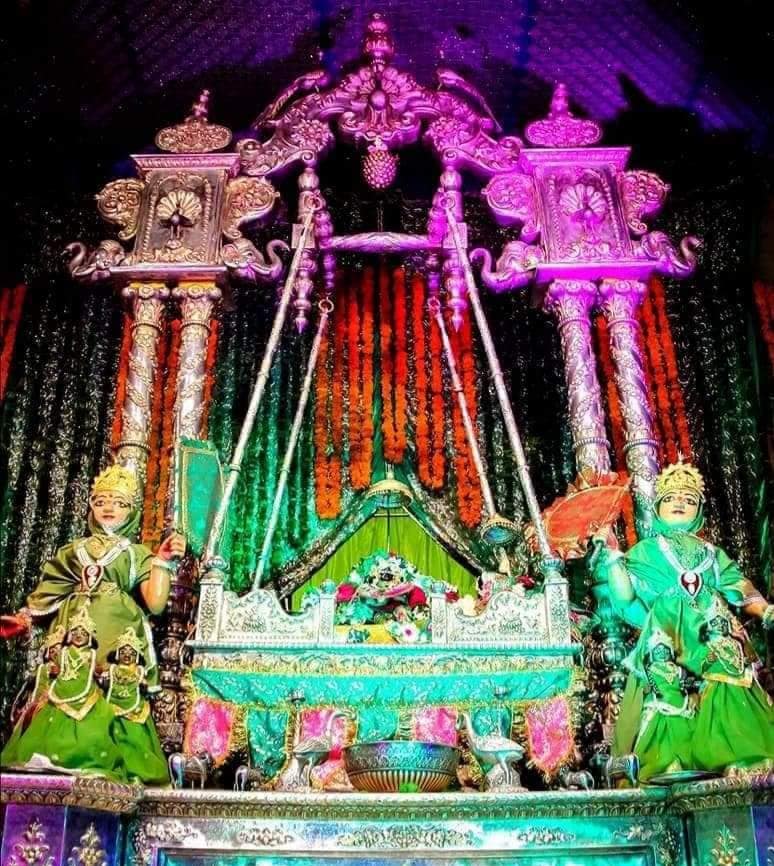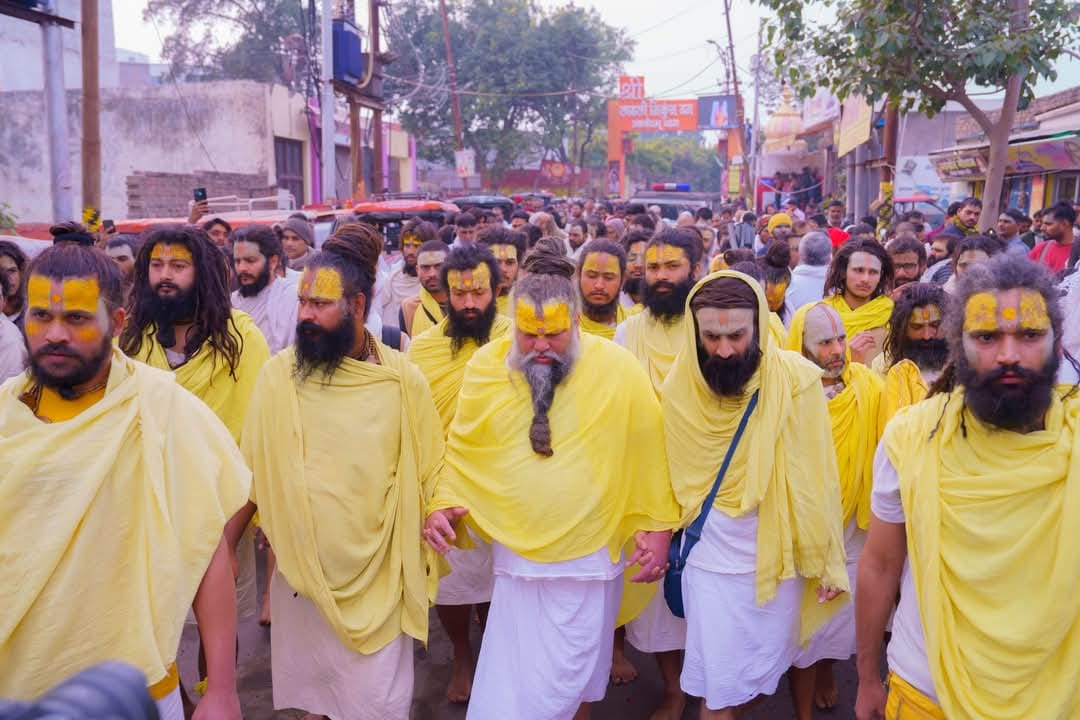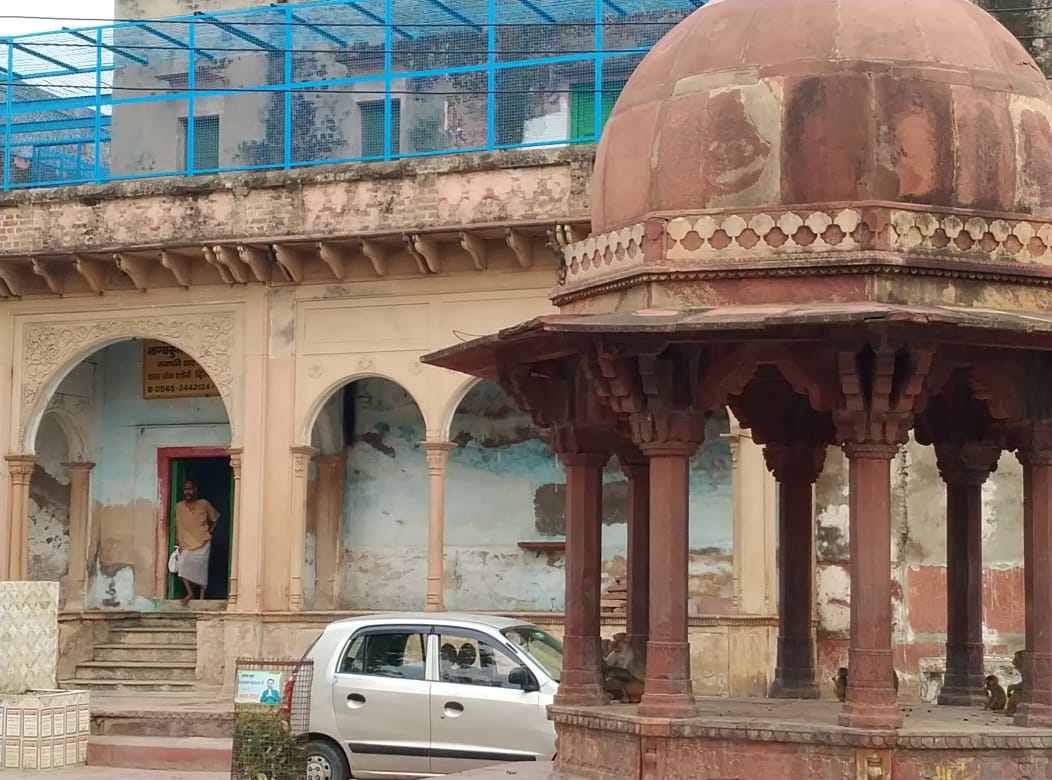2025.08.14 (Vrindavan Today News): Vrindavan, one of the religious significant cities of Vaishnavism, has long captivated the hearts of devotees and scholars alike. Yet, observing its current state, one cannot help but ask – what is the fault of Vrindavan that it has been subjected to relentless neglect and exploitation across the ages? From the dawn of creation to the present day, this sacred land has endured repeated injustices, often at the hands of ruling authorities. The question remains: when will this painful chapter of exploitation and oversight finally come to an end?
Origins and Mythical Significance
According to ancient texts, the divine presence of Vrindavan predates creation itself. In Satya Yuga, during the cosmic event of the Samudra Manthan (churning of the ocean), when the nectar of immortality first emerged, Garuda carried the pot of amrita (nectar) and rested upon the ancient Kadamba tree on the Yamuna banks of Vrindavan. From here, the first drops of amrita spilled onto the sacred land of Vrindavan, followed by Haridwar, Prayagraj, Ujjain, and Nasik. This early divine favoritism paradoxically marked the beginning of Vrindavan’s historical marginalization—whereas other sacred regions celebrated grand Kumbh festivals, Vrindavan was reduced to merely a symbolic “Kumbh seat.”
Further challenges emerged in the Dvapara Yuga and beyond. The demon Madhu, born from the earwax of Lord Vishnu, established the kingdom of Madhupuri (Mathura) and absorbed Vrindavan into it, effectively stripping the town of its sovereignty. Madhu and his brother Kaitab were eventually vanquished by Goddess Chandi. In Treta Yuga, Madhu’s son, Lavanasura, ruled Mathura until Shatrughna, brother of Lord Rama, defeated him. Although Mathura became a flourishing capital under Shatrughna, Vrindavan remained neglected.
During Dvapara Yuga, Shri Krishna restored Vrindavan’s divine essence and brought it to its idyllic, scripturally described state. However, this period of joy was brief. Shri Krishna soon went to Dwarka, leaving Vrindavan behind. Centuries later, in the early years of Kali Yuga, Krishna’s great-grandson, Vajranabha, revisited Vrindavan to preserve ancestral memories, yet he too could not focus on local development or population welfare.
Centuries of Political Neglect
Since then, Vrindavan has faced immense challenges. For thousands of years, successive ruling powers—Mauryas, Guptas, Mughals, Marathas, the Vijayanagara empire, Cholas, the Delhi Sultanate, and British colonial authorities—have often attempted to undermine the cultural and spiritual heritage of Braj. An exception was Emperor Akbar, under whose reign the Bhakti movement flourished, allowing Vrindavan a brief resurgence of glory. Yet even this period of cultural revival was fleeting, unable to fully address centuries of accumulated socio-religious and infrastructural neglect.
The modern era has brought little relief. Despite India’s independence in 1947, Vrindavan continues to grapple with basic civic issues such as electricity, water supply, roads, sanitation, security, and pollution control. The Yamuna, which runs through the town, remains heavily polluted despite multiple campaigns to cleanse it. Moreover, despite a literacy rate of nearly 75%, Vrindavan lacks institutions for higher education; the sole college, Institute of Oriental Philosophy (IOP), established in 1962–63, remains the only degree-granting institution in the region.
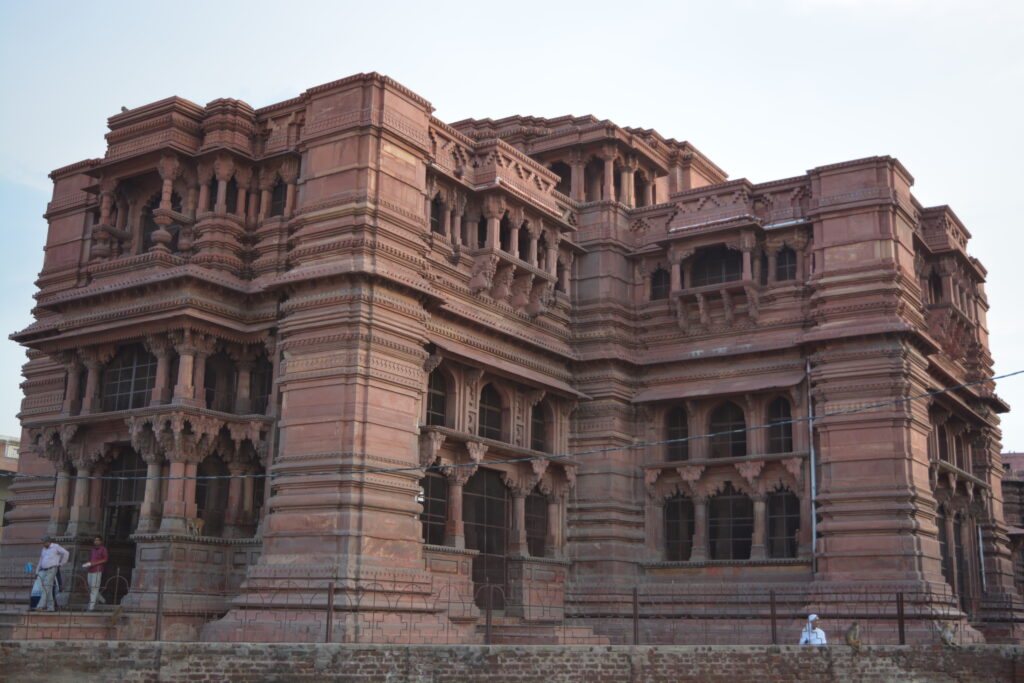
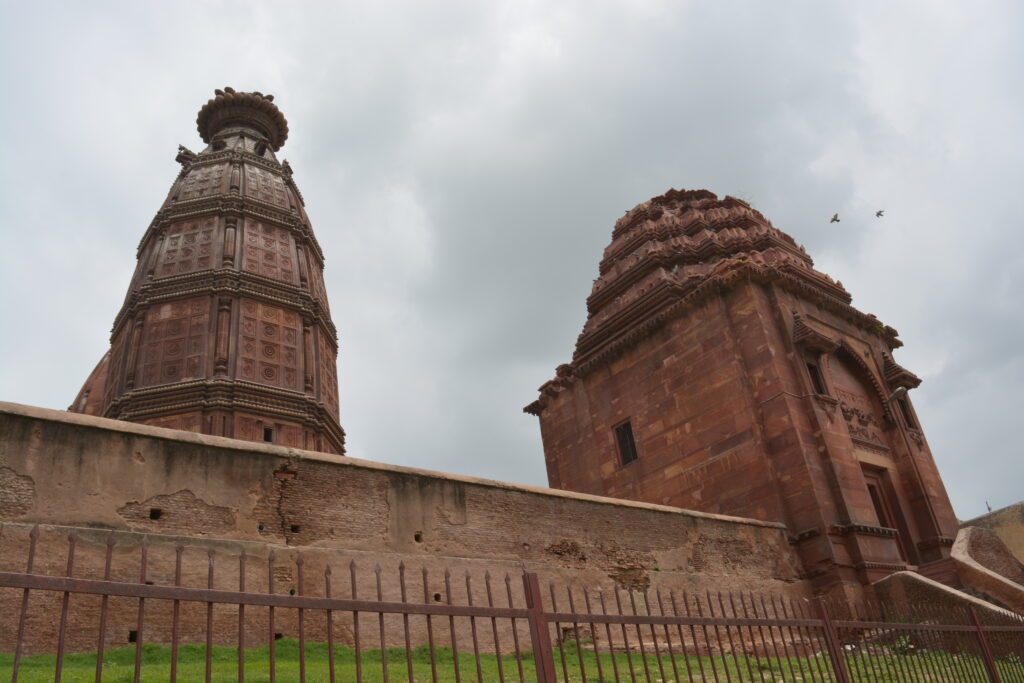
Cultural Heritage in Decay
Vrindavan is dotted with scores of temples, monasteries, palaces, gardens, ghats and sacred ponds built by kings, nobles, and wealthy patrons over centuries. Without proper maintenance, many of these historic structures have fallen into ruin. Efforts to preserve them have largely been inadequate, leaving a rich cultural and architectural heritage at risk of disappearing. Consecutive governments in the past brought the superficial projects which has harmed Vrindavan more than it benefitted it. It compromised with the heritage and culture of the ‘sacred city’. The Parikrama Marg, which used to be a pedestrian friendly kuttcha road was concretized and paved by the then state government in the late 1990’s. The malafide intention was to build the road was to make VIP passage to Banke Bihari Temple. In fact, the portion of that road on parikrama was named as VIP road. The paving of the road also helped the land mafias to encroach upon the Yamuna Flood Plain on the left side of Parikrama and develop illegal colonies.
Then in the year 2010 , the government under Mayawati brought the proposal to build a half circular flyover right in front of the iconic Keshi Ghat and Yugal Kishor Temple. However, after a long legal battle the project of constructing flyover was stayed by the Allahabad High Court, and half done pillars were also dismantled. Similarly, the then government under Akhilesh Yadav brought the ‘Riverfront Development Project’ in 2016. The ill designed project would encroach upon the Yamuna river bed by constructing concrete platforms and further pollute the river Yamuna. The project was also junked by the National Green Tribunal as the petitioners raised concern on the river’s uninterrupted flow.
The steps of the ancient ghats was buried under the construction rubble and the debris. The government simply watched but didn’t stop the environmental crime. Instead, it built a road on top of it by declaring it as Parikrama Marg.
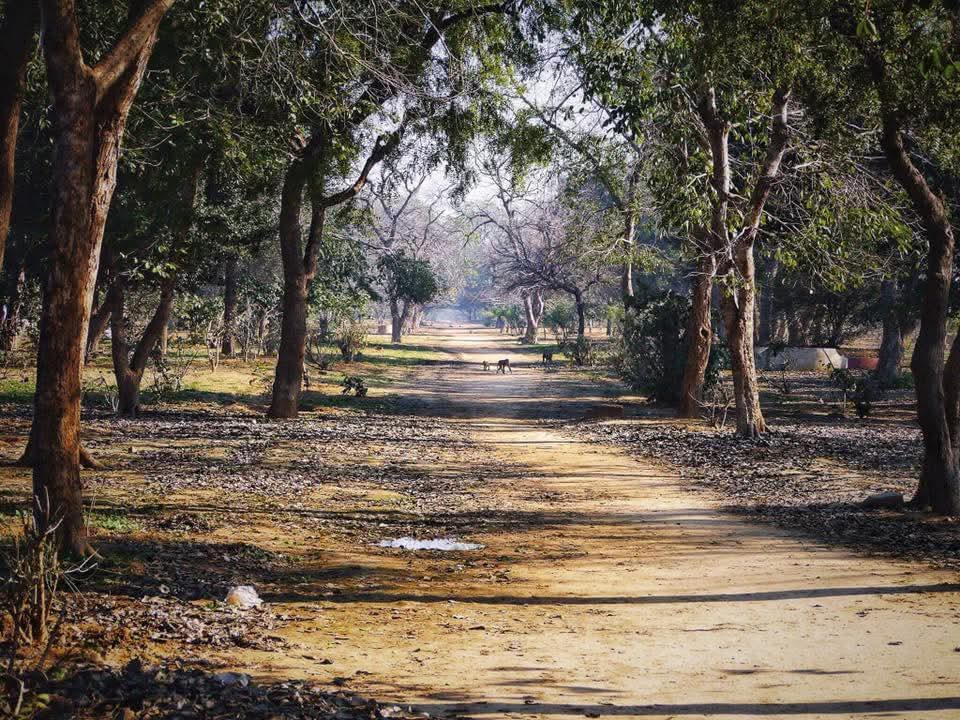
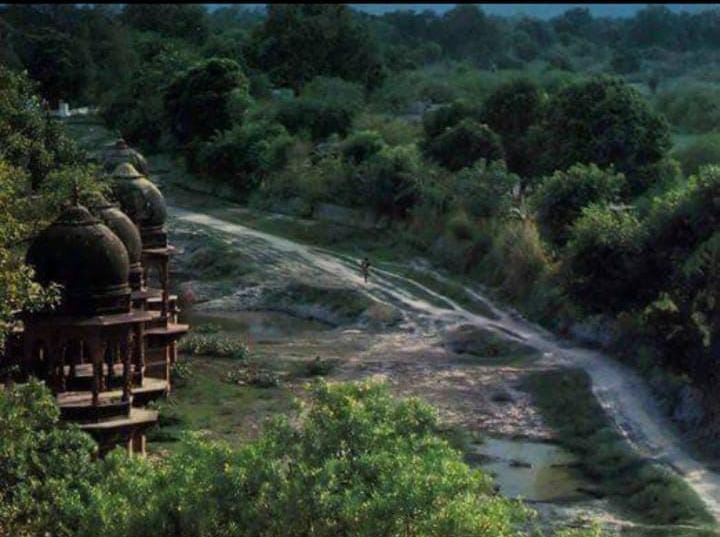
Adding to these structural challenges is the impact on the Sevayat (temple service) community, whose members have dedicated their lives to the worship and service of Lord Banke Bihari. Legislative interventions and bureaucratic appointments of priests have undermined the traditional Sevayat system, creating tension and distress within this ancient custodial community. Similarly, government’s intention to take control on the 197 temples of Braj, and proposal to develop Sapta Devalaya Circuit have created fear amongst the priest community. It should be noted that the Dharmarth Department of Uttar Pradesh Government had filed an intervening application before the Supreme Court with a plea to allow the government to take control of the 197 temples. However, the matter was disposed off by the court, with out passing any order on that request.
Governance and Civic Challenges
Vrindavan’s political representation has also been a matter of contention. For decades, Braj residents have sought independent legislative recognition, separate from Mathura. Instead of honoring this demand, authorities merged Vrindavan Municipality with Mathura by forming the Mathura Vrindavan Municipal Corporation, diluting its administrative autonomy. Recent government-led temple management and urban planning initiatives have further alienated local devotees, forcing them to distance themselves from their venerated Lordships.
Despite centuries of adversity, Vrindavan continues to await its revival. This sacred land, steeped in myth, devotion, and history, cries out for responsible governance, comprehensive urban development, and preservation of its unparalleled cultural heritage. Restoration of its temples, educational institutions, civic infrastructure, and the autonomy of its Sevayat community is not merely a matter of heritage conservation—it is a moral imperative, ensuring that this timeless dhama (sacred abode) regains the glory that centuries of neglect have obscured.
Vrindavan’s story is one of resilience amidst relentless adversity. Today, it still looks toward its divine protector and the wider world, hoping for the justice, attention, and restoration that it has been awaiting for millennia.


